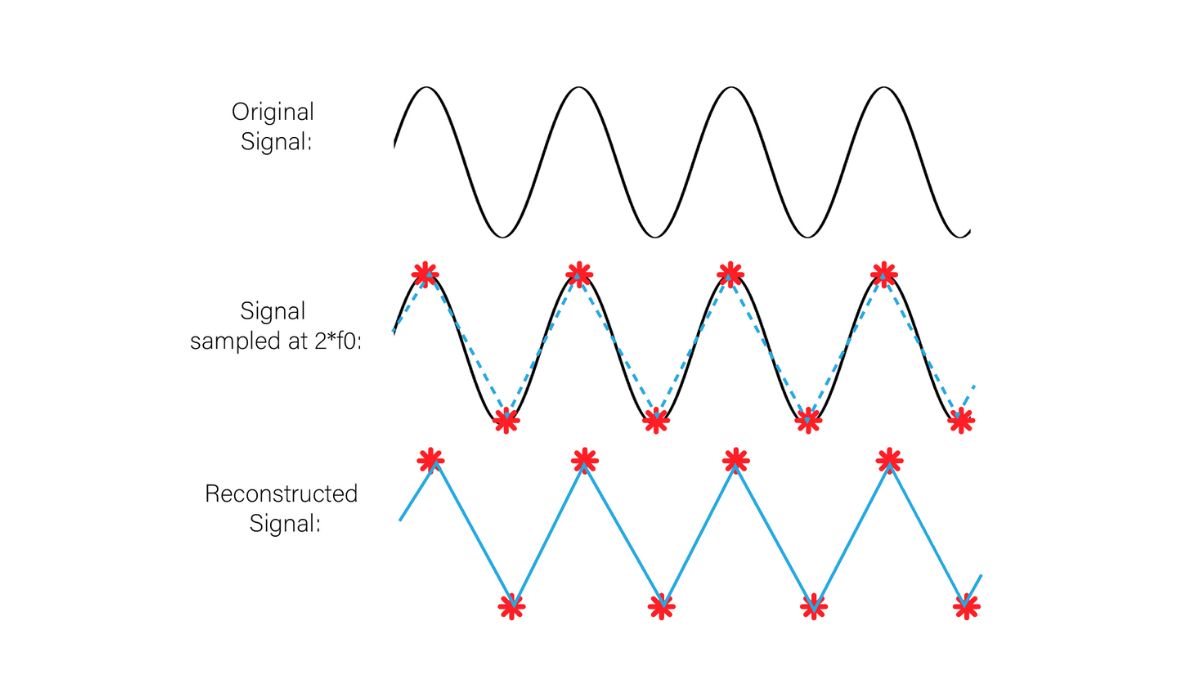Home>Events & Info>Frequency>How To Block Low-Frequency Noise


Frequency
How To Block Low-Frequency Noise
Published: February 18, 2024
Learn how to effectively block low-frequency noise with our expert tips and techniques. Discover how to minimize the impact of frequency noise in your environment.
(Many of the links in this article redirect to a specific reviewed product. Your purchase of these products through affiliate links helps to generate commission for AudioLover.com, at no extra cost. Learn more)
Table of Contents
Introduction
Low-frequency noise can be a pervasive and disruptive force in our daily lives, affecting our well-being and productivity. Whether it's the rumble of traffic, the hum of machinery, or the drone of appliances, low-frequency noise can permeate our living and working spaces, causing discomfort and irritation. In this article, we will delve into the world of low-frequency noise, exploring its nature, effects, and most importantly, strategies to effectively block it out.
It's essential to understand that while high-frequency noise is more readily absorbed by common soundproofing materials, low-frequency noise presents a unique challenge due to its long wavelengths. This makes it more difficult to mitigate and block, requiring specific techniques and materials tailored to combat these lower frequencies. By gaining a deeper understanding of low-frequency noise and its sources, we can implement targeted solutions to minimize its impact on our daily lives.
In the following sections, we will explore the science behind low-frequency noise, its effects on human health and comfort, the common sources of this type of noise, and effective methods to block it. By the end of this article, you will have a comprehensive understanding of low-frequency noise and be equipped with practical knowledge to create quieter and more peaceful environments. Let's embark on this journey to conquer the rumblings and rumbles that disrupt our tranquility.
Understanding Low-Frequency Noise
Low-frequency noise refers to sound waves with a frequency below 100 Hz, often characterized by a deep, rumbling quality. Unlike higher frequency noise, which is more easily absorbed by common building materials, low-frequency noise presents a unique challenge due to its ability to travel through walls, floors, and other structures with relative ease. This phenomenon is attributed to the long wavelengths of low-frequency noise, allowing it to penetrate physical barriers that would typically block higher frequency sounds.
It’s important to note that low-frequency noise can emanate from a variety of sources, including industrial machinery, HVAC systems, traffic, and even natural phenomena such as wind and water flow. In indoor environments, common culprits of low-frequency noise include air conditioning units, refrigerators, and even the vibrations from nearby transportation networks.
Understanding the nature of low-frequency noise involves recognizing its unique ability to propagate through various materials and its potential to cause structural vibrations. These vibrations can lead to secondary noise transmission, further amplifying the impact of low-frequency noise within a space.
Moreover, low-frequency noise can have a significant impact on human perception and comfort. While it may not always be as immediately noticeable as higher frequency noise, its persistent presence can induce feelings of unease, disrupt concentration, and even lead to health issues such as increased stress levels and sleep disturbances.
As we delve deeper into the mechanisms of low-frequency noise, it becomes evident that addressing this form of noise pollution requires specialized approaches that account for its unique characteristics. By gaining a comprehensive understanding of low-frequency noise, we can develop effective strategies to mitigate its effects and create more peaceful and harmonious environments.
Effects of Low-Frequency Noise
Low-frequency noise can exert a profound impact on both physical and psychological well-being, often manifesting in a range of adverse effects that permeate various aspects of daily life. One of the primary consequences of prolonged exposure to low-frequency noise is the disruption of sleep patterns. The deep, rumbling nature of low-frequency noise can penetrate walls and windows, making it particularly intrusive during nighttime hours. This disturbance can lead to fragmented sleep, increased awakenings, and overall diminished sleep quality, ultimately contributing to fatigue and reduced daytime functioning.
Beyond its influence on sleep, low-frequency noise has been associated with heightened stress levels and anxiety. The persistent presence of low-frequency noise can evoke feelings of unease and tension, impacting mental well-being and contributing to a sense of discomfort within living and working environments. Furthermore, prolonged exposure to low-frequency noise has been linked to cognitive impairment, potentially affecting concentration, memory, and overall cognitive performance.
Physiologically, the effects of low-frequency noise can extend to cardiovascular health, with research indicating a correlation between long-term exposure to low-frequency noise and an increased risk of hypertension and other cardiovascular issues. The continuous stimulation of the body’s stress response due to low-frequency noise can elevate blood pressure and contribute to cardiovascular strain over time.
Moreover, the disruptive nature of low-frequency noise can impede effective communication and productivity in various settings, ranging from office environments to residential spaces. The persistent rumble and vibration can create an environment that is less conducive to concentration, leading to decreased productivity and heightened frustration among occupants.
As we unravel the multifaceted effects of low-frequency noise, it becomes evident that addressing this form of noise pollution is crucial not only for individual well-being but also for fostering harmonious and functional living and working environments. By comprehensively understanding the diverse impacts of low-frequency noise, we can implement targeted strategies to mitigate its effects and enhance overall quality of life.
Identifying Sources of Low-Frequency Noise
Recognizing the sources of low-frequency noise is essential in developing effective strategies to mitigate its impact. This form of noise pollution can arise from a multitude of sources, both indoors and outdoors, and understanding these origins is paramount in creating quieter and more peaceful environments.
Outdoor sources of low-frequency noise often include transportation-related activities such as road traffic, railway operations, and aircraft movements. The low-frequency rumble generated by vehicles and trains can propagate over considerable distances, impacting surrounding residential and commercial areas. Additionally, industrial activities and construction sites can produce substantial low-frequency noise, characterized by deep, resonant tones that can permeate nearby structures.
Indoors, common sources of low-frequency noise encompass HVAC systems, particularly older models or those in need of maintenance, which can emit a persistent hum or rumble. Refrigeration units, especially in commercial settings, also contribute to indoor low-frequency noise. Furthermore, mechanical equipment such as generators and pumps can generate low-frequency vibrations that manifest as disruptive noise, particularly in industrial and utility settings.
In some cases, natural phenomena can also be a source of low-frequency noise. Wind passing through structures and causing vibrations, as well as water flow in plumbing systems, can generate low-frequency rumblings that reverberate through buildings. Identifying these less obvious sources of low-frequency noise is crucial in addressing the comprehensive spectrum of noise pollution within a given environment.
Effective identification of low-frequency noise sources often involves a combination of careful observation, acoustic measurements, and, in some cases, the utilization of specialized equipment such as sound level meters and vibration analyzers. By pinpointing the specific sources of low-frequency noise, individuals and organizations can tailor their noise mitigation efforts to directly address the root causes, leading to more impactful and sustainable solutions.
As we gain insight into the diverse sources of low-frequency noise, it becomes clear that a thorough understanding of these origins is fundamental in implementing targeted strategies to minimize their impact. By honing our ability to identify and categorize low-frequency noise sources, we pave the way for the development of tailored interventions that promote quieter and more serene living and working environments.
Methods to Block Low-Frequency Noise
Effectively blocking low-frequency noise requires a multifaceted approach that addresses its unique characteristics and transmission pathways. While traditional soundproofing methods may suffice for higher frequency noise, combating low-frequency noise demands specialized strategies and materials tailored to its long wavelengths and penetrating nature.
One effective method to attenuate low-frequency noise is the strategic use of dense materials with substantial mass. Mass-loaded vinyl, for instance, is a dense, flexible material that can be added to walls, ceilings, and floors to enhance their sound-blocking capabilities, particularly against low-frequency noise. When installed as an additional layer within structures, mass-loaded vinyl serves to impede the transmission of low-frequency vibrations, thereby reducing their impact within a space.
Another valuable approach involves the implementation of vibration isolation techniques. By decoupling vibrating sources from building structures, such as isolating machinery from floors and walls using resilient mounts or isolators, the transmission of low-frequency noise can be significantly diminished. This method disrupts the pathway through which low-frequency vibrations travel, effectively reducing their influence on surrounding spaces.
Furthermore, the strategic placement of sound-absorbing materials can aid in mitigating the impact of low-frequency noise. While these materials may not directly block the transmission of low-frequency noise, they can help reduce reverberation and echo within a space, thereby minimizing the overall acoustic discomfort caused by low-frequency rumblings.
For outdoor environments impacted by low-frequency noise, the installation of barriers and sound walls can prove effective in reducing its reach and influence. These structures are designed to intercept and reflect sound waves, including low-frequency components, mitigating their propagation and lessening their impact on nearby residential and commercial areas.
It’s important to note that a comprehensive approach to blocking low-frequency noise often involves a combination of these methods, tailored to the specific characteristics and sources of the noise in question. By integrating a range of targeted strategies, individuals and organizations can effectively create environments that are more resilient to the intrusion of low-frequency noise, fostering tranquility and comfort.
As we explore the diverse methods to block low-frequency noise, it becomes evident that addressing this form of noise pollution requires a nuanced and specialized approach. By leveraging the unique properties of materials and employing strategic design interventions, we can effectively combat the pervasive influence of low-frequency noise, creating spaces that are conducive to peace, productivity, and well-being.
Conclusion
Low-frequency noise poses a significant challenge in our quest to create tranquil and harmonious living and working environments. Its unique ability to penetrate structures and its potential to induce a range of adverse effects on human well-being underscore the importance of addressing this form of noise pollution with targeted and effective strategies.
By gaining a comprehensive understanding of low-frequency noise, its origins, and its impact, we can embark on a journey toward creating spaces that are more resilient to its influence. From the rumble of traffic to the hum of machinery, the sources of low-frequency noise are diverse and pervasive, necessitating a multifaceted approach to mitigate their effects.
Through the strategic use of dense materials, vibration isolation techniques, and sound-absorbing interventions, we can effectively block the transmission of low-frequency noise, fostering environments that are conducive to peace, productivity, and well-being. Additionally, the installation of outdoor barriers and sound walls can serve as valuable tools in reducing the reach and influence of low-frequency noise, particularly in urban and industrial settings.
Furthermore, the identification of low-frequency noise sources is fundamental in developing targeted interventions that directly address the root causes of this form of noise pollution. By honing our ability to recognize and categorize these sources, we lay the groundwork for the implementation of tailored strategies that promote quieter and more serene living and working environments.
As we navigate the realm of low-frequency noise, it becomes clear that our ability to combat its pervasive influence is contingent upon a comprehensive understanding of its nature and the deployment of specialized methods to block its transmission. By integrating these approaches, we can create spaces that shield occupants from the disruptive impact of low-frequency noise, fostering environments that prioritize comfort, concentration, and overall well-being.
In conclusion, the quest to block low-frequency noise is a multifaceted endeavor that demands a nuanced and targeted approach. By leveraging our understanding of this form of noise pollution and implementing specialized strategies, we can cultivate environments that offer respite from the pervasive rumblings and rumbles, nurturing spaces that promote tranquility and harmony.











